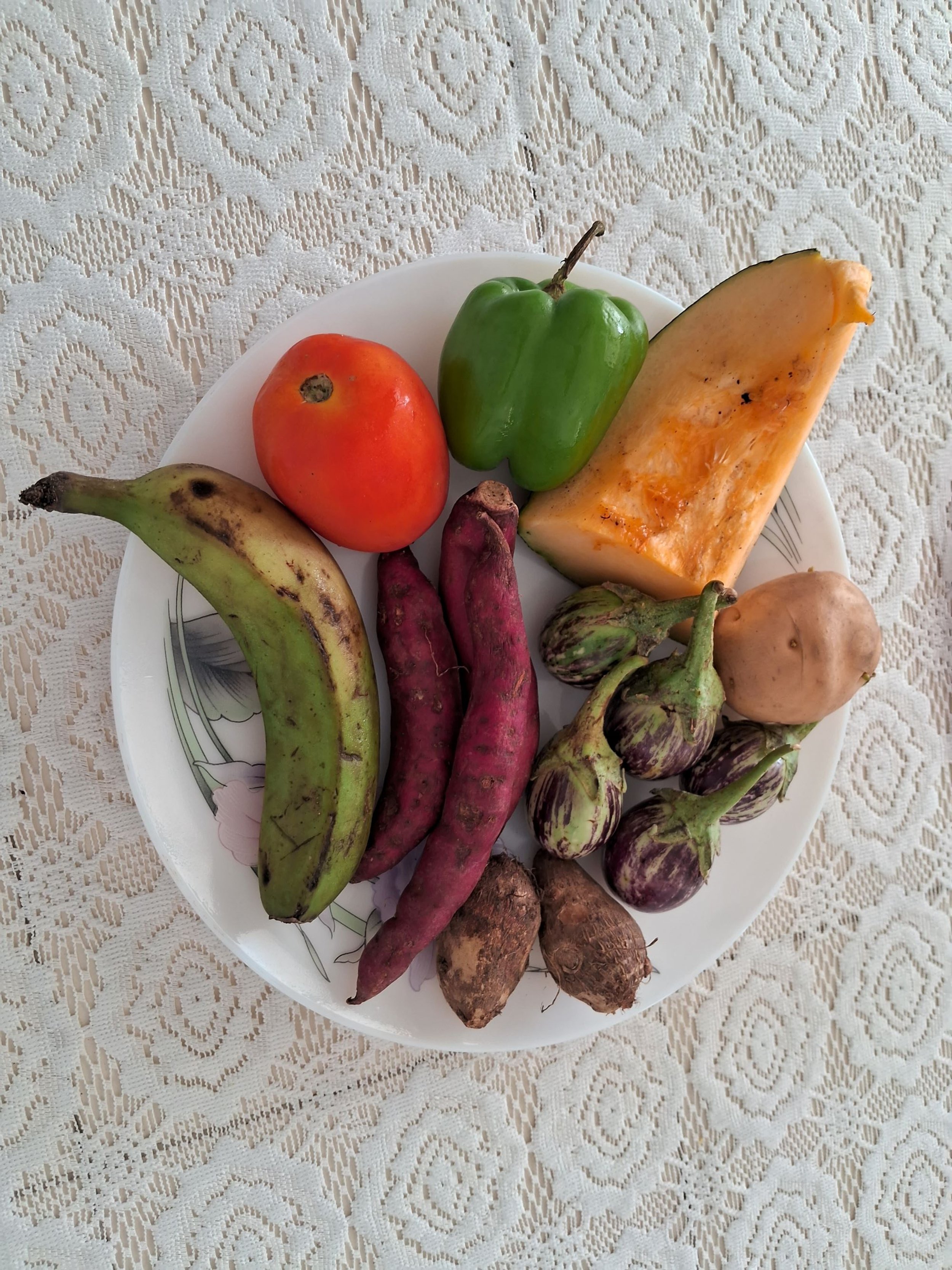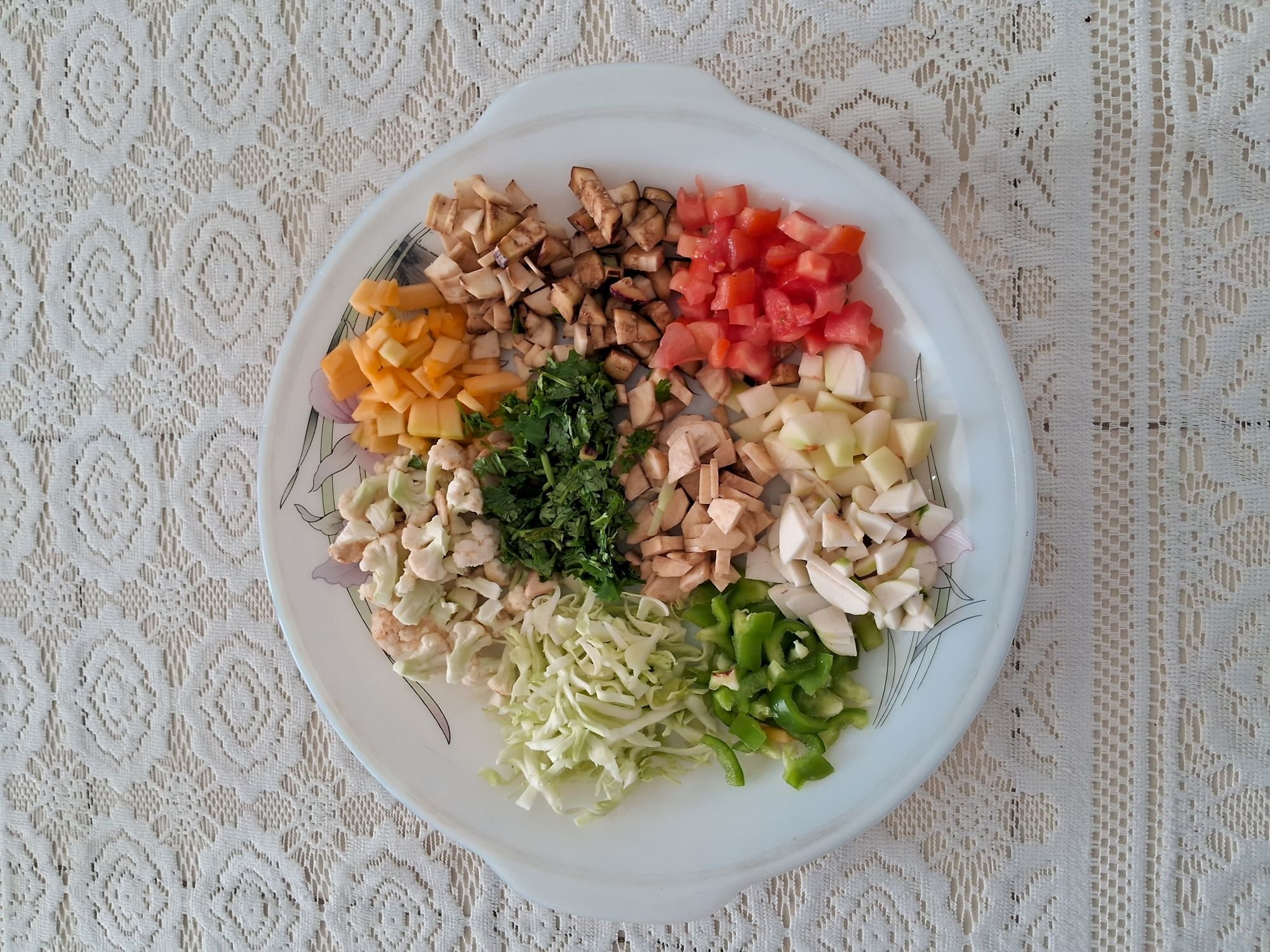Annakoot ki Sabzi on Govardhan Puja is Made with 56 Ingredients

Nupur Roopa examines the popular mixed vegetable dish served on this festive day.
Diwali typically brings to mind scenes of laddoos, barfis, dry fruits, and namkeens, shared with friends and family. As a child, I looked forward to these sweets, but specifically also, a mixed vegetable dish called annakoot ki sabzi.
At my friend, Aparna Maheshwari’s house, on the day after Diwali, we would celebrate Govardhan puja. I would go by early, enthusiastic to help to shell peas, peel potatoes, raw bananas, sweet potatoes, and colocasia, to prepare the annakoot ki sabzi. Her grandmother would prepare the dish in their backyard, on a brick chulha, while singing bhajans to Lord Krishna.
It is believed that annakoot ki sabzi is offered to Lord Krishna in gratitude for lifting the Govardhan mountain to protect the people of Vrindavan from torrential rains by an angry Lord Indra. This is a significant ritual observed in many homes and temples in Rajasthan, Uttar Pradesh, Madhya Pradesh, Haryana, and Punjab. It also marks the arrival of winter vegetables in the market, and the dish is offered to the gods in gratitude for an abundant harvest. (Read more about why mixed vegetables are an Indian staple)
At the 250-year-old Murali Manohar temple in Jhansi, annakoot prasad is a sabzi called rambhaji, which is prepared for ‘bhandara’ (a free meal served on festival days in temples) at Govardhan Puja, shares Sarla Mathur, a homemaker. “This is the time when first ‘dhaan’ (rice) of the season, with the winter bounty, arrives in the market. And as a mark of gratitude, a meal is prepared and offered to the gods”, explains Manju Devi Agrawal from Rajasthan, now a resident of Nepal. The meal includes rice, khichdi, kadhi, papad, annakoot sabzi, and mithai.
Traditionally, this sabzi is prepared with 56 ingredients — a mix of vegetables and spices. The vegetables include potatoes, bottle gourd, cauliflower, carrots, peas and pumpkin with green vegetables like spinach, fenugreek, chana (chickpea) leaves, radish leaves and other leafy greens. Brinjal is added too: the vegetable is prohibited during Chaturmass (a holy period of four months from June to October) and after Diwali, is included in meals.
“The philosophy behind this tradition is to increase the biodiversity on our plates, and to shine a spotlight on uncommon vegetables,” explains Sarla.
This recipe comes from Aparna’s grandmother.
RECIPE FOR ANNAKOOT KI SABZI
Ingredients
3 potatoes, peeled and cut in small pieces
3 small brinjals, cut in small pieces
1 cauliflower (florets)
1 cup carrot pieces
½ cup peas
½ cup cut broad beans
¼ cup cut radish beans
½ cup radish pieces
1 colocasia (arbi) peeled and cut)
1 cup bottle gourd pieces
¼ cup raw papaya pieces
¼ cup sweet potato pieces
¾ cup raw banana pieces
¾ cup pumpkin pieces
1 cup chopped spinach
½ cup chopped fenugreek leaves
3 tomatoes (pureed)
¾ cup chopped fresh coriander
Spices
1 tsp mustard seeds
1 tsp cumin seeds
1 pinch asafoetida
1 tsp turmeric powder
2-3 bay leaves
1 tsp coriander powder
½ tsp red chili powder
½ tsp peppercorns (ground coarsely)
1-2 cinnamon sticks
1 tsp anardana powder
1 tsp garam masala
1 tbsp ginger grated
2 green chillies chopped
2 tbsp oil
Salt, to taste
Method
Heat oil in a pan. Add mustard seeds, asafoetida, bay leaf, cinnamon, and cumin seeds.
Then, add grated ginger and green chillies. Saute for a few minutes.
Add all the vegetables except spinach, fenugreek, and tomato puree. Mix well.
Make a paste of turmeric powder, chilli powder, coriander powder and salt, and stir in.
Add two cups of water, mix and cook on high flame until it reaches a boil.
Add spinach and fenugreek. Reduce the flame, then cover and cook until the vegetables soften.
Add the tomato puree and cook further.
Now, add garam masala, anardana, pepper powder and chopped coriander.
Mash lightly to give a semi-solid texture, and cook for a few minutes. The dish is ready.
Nupur Roopa is a freelance writer and a life coach for mothers. She writes articles on education, environment, food, history, parenting, and travel.
ALSO ON GOYA











